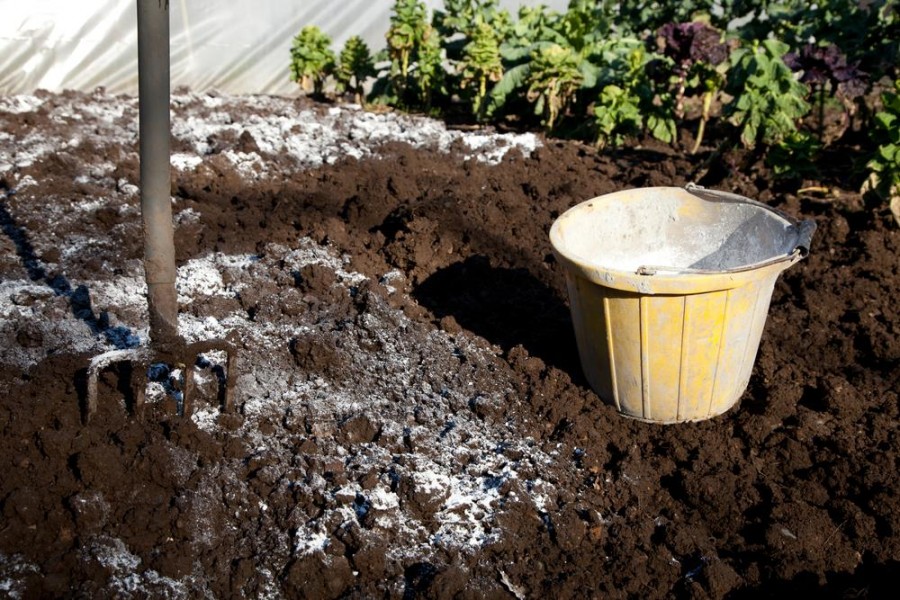Soil management with liming and organic matter can be the best ways of boosting crop yield by 25 per cent on an average in the high Barind area because most of its lands have turned into acidic at present hampering crop production badly.
"Acid soils are a major agricultural constraint for crop production due to its detrimental effect on soil fertility and productivity," said Dr Nurul Islam, Principal Scientific Officer of Soil Resource Development Institution (SRDI).
These were ascertained in a number of experimental plots of wheat, lentil, potato and chickpea at different locations.
The crops were cultivated in two separate demonstration plots, one experiment and other farmers’ practice, to evaluate the effects of liming and organic matter on soil properties, soil health and growth traits.
On behalf of its 'Strengthening of Soil Resource and Research Facilities' Project, SRDI has been conducting the research since January 2018. The main objective of the five-year project is to achieve more broad-based and sustainable outcomes in soil health, soil amendment, food security, environmental management and economic opportunity in the region.
Quoting the research findings, Dr Islam said liming and organic fertilization has been found effective towards boosting cropping yield through protecting soil health in the high Barind area.
Organic matter creates a positive soil environment from which plants can uptake nutrients from applied chemical fertilisers. It increases the uptake of applied chemical fertilisers by the plants which contribute to increasing crop productivity by reducing the toxic flow of active chemical fertilisers to the environment.
Each of the farmers was given all sorts of imputing support including fertiliser, labour, water for irrigation and technical know-how for farming crops on one bigha of experimental plots.
Taimur Ali, a farmer in Parbatipur area under Gomostapur Upazila, had cultivated wheat on two bighas of lands and harvested 18 mounds of yield from the one-bigha experiment plot while 12 mounds from the conventional one.
“I have harvested nine mounds of lentils from the experiment plot while six mounds from his own conventional system,” said Shariful Alam, another farmer of Patari village under Shapaher Upazila, adding that the liming and organic matter system is cost-effective.
Potato yield was 115 mounds per bigha in an experimental plot against 90 mounds of farmers practice while the yield of chickpea was 13 mounds of experimental plot against six mounds of the conventional system, said farmer Saiful Islam of Badhair village under Tanore Upazila.
Dr Nurul Islam said soil organic matter is a key factor in maintaining long-term soil fertility since it is the reservoir of metabolic energy, which drives soil biological processes involved in nutrient availability.
The farmers applied half-rated chemical fertiliser along with optimum organic fertiliser and bio-pesticide in their fields in order to make them financially benefited side by side with protecting the soil health.
“We have provided technical knowledge on proper and effective application of organic methods in farming fields to the targeted farmers,” he added.
Most of the soils in the Barind area have less than 1.5 per cent and some soils contain even less than one per cent organic matter whereas good soil should have at least 2.5 per cent organic matter.
He defined that organic matter supplies plant nutrients, increases water holding capacity of the soil, reduces the residual negative effects of fertilisers and pesticides. It makes the crops more tolerant to diseases, insects and also prevents soil erosion.
It is also the energy source for soil microorganisms, which are the primary agents that enhance the decomposition and release of minerals in the soil system.
As a whole, the soil environment is very important for plant growth and soil pH is the most important indicator of the soil environment.
Dr Islam said bringing all the farming fields under liming and organic fertilization is a big challenge. The time has come to establish 'Acidic Soil Management and Research Centre' in the region to face the existing challenge.
The centre can also help ensure food security, adapting climate change, soil health management and sustainable crop production, he added.

- Tuesday, 19 November 2024 |
- Today's FE |
- e-Paper |
- Beta Website

